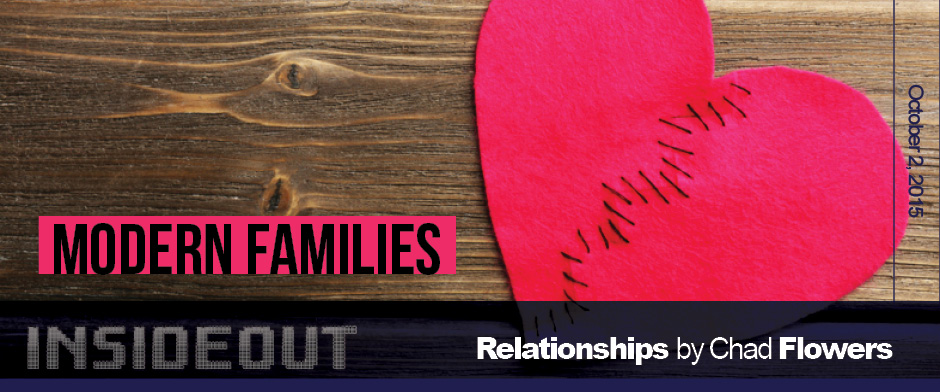Modern Families

We live in a culture where divorce is prominent, and blended families are becoming more common. The conversation is not about “divorce” only but about “re-divorce.” Nobody carries a childhood dream to be part of a stepfamily; yet one out of three eventually find themselves in one. Consider the following statistics from Dr. Tim Clinton’s Quick Reference Guide to Counseling Teenagers:
As a youth pastor, I hated the month of July. During this month over half of our youth group (from divorced homes) was gone spending time with the other parent who usually was not in church. I felt like I had to spend August and September just getting them prayed back through from having a whole month without anything godly in their life! In some situations, four or five adults are trying to parent even more children, coming at them with different ideas of truth and value systems. It should not be surprising that an absolute truth with non-negotiables is so easily rejected by teenagers and young adults today. They’ve grown up with a plethora of belief systems and values thrown at them!
In Ron Deal’s book, The Smart Stepfamily, Deal describes how divorce doesn’t end a family; it simply reorganizes it. Relationships become complex, to put it lightly. Complexity brings on stress, and stress in a stepfamily causes blood to grow very thick. It’s no wonder that two-thirds of remarriages end with a re-divorce, and the kids get bounced back into a single-parent home or quickly onto another stepparent home.
Think about this: when a couple gets re-married, they are answering in front of everyone that day who they are as a couple. But the marriage that creates a blended family suddenly creates other questions that have to be answered: “Who are we as a family?”; “How am I going to act with my stepsibling?”; “What do I need to call my new stepparent?” Ambiguity abounds because there is no solid identity. What would normally be perceived as healthy and right can add to the insecurity. For example, in a home where divorce has not happened, children typically feel security by seeing their parents embrace. However, in the home of a blended family, when the parents embrace in front of the children, it can stir up anger and fear because one of the spouses is not the student’s biological parent. The process to form an identity as a blended family can take years, assuming the stepfamily survives. The shallow view of lasting relationships and low self-image being caused by divorce, remarriage and re-divorce in society has impacted the lives of many, if not most, of the students in our churches today!
But there is hope! Though this may be the norm for many of the students in our youth groups, Paul gives us an answer: “…put on tender mercies, kindness, humility, meekness, longsuffering; bearing with one another, and forgiving one another…but above all these things put on love, which is the bond of perfection. And let the peace of God rule in your hearts…” (Colossians 3:12-16, NKJV). I appreciate the many incredible youth programs, systems, and sermons available at our fingertips today. But maybe what that student sitting next to you in the pew needs most is someone to listen to their pain and to show God’s love by praying for and with them. Most hurting people begin to be healed when they are heard!
Chad Flowers is married to his best friend and teammate, Mendy. He’s a daddy to two incredible little girls, Jadyn and Keira, and one son, Chandler. He lives in Mesquite, Texas where he has a private practice as a licensed professional counselor and serves as pastor of Emmanuel Pentecostal Church.









